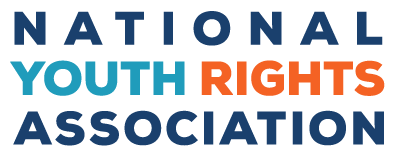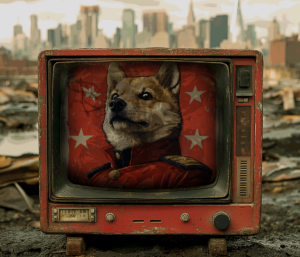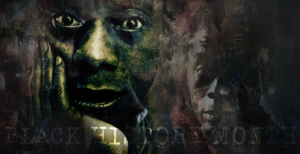Youth Liberation seeks to change how adults treat young people. But what
makes someone an “adult”? Who falls into the category of “young people”?
Where is the line between these two groups?
I. THREE MODELS OF AGE
Before we begin trying to answer these questions, it’s valuable to take a
step back and look first at the more general concept of age. It seems to me
that there are three main models of age:
1. Age as biology
2. Age as legal status
3. Age as personal character
(1) AGE AS BIOLOGY
The “age as biology” model addresses natural phenomena: the sheer number of years that one has been alive, growing taller, physical changes associated with puberty, dental record, brain development, etc. Several of these attributes could be equated with “adulthood”: when one has lost all their “baby teeth”, when one stops getting taller, when secondary sex characteristics such as menstruation, breast development, and facial hair appear. However, it’s important to notice that discussions about “adults” and “youth” seldom have anything to do with biology itself — focus is almost always on social differences (law and character).
[A noteworthy variant of the “age as biology” model is the concept of
“mental age”. The “mental age” model suggests that just as the body progresses through stages of development, so does the mind — but development of the two are not always in sync. This idea most frequently comes up when discussing people with “developmental disabilities” — adults with the intelligence or emotionality “of a child”. …The popular sentiment that “you’re only as old as you feel” also invokes the “mental age” model.]
(2) AGE AS LEGAL STATUS
The “age as legal status” model addresses laws that sort people into the
categories “adult” and “minor” (or simply “under age”). While attempts may be made to associate legal age-lines with natural biological changes, they are in themselves entirely artificial. There is no meaningful difference between an 18-year-old on their birthday, and the 17-year-old they were the day before, except that which is invented and imposed by legislators.
(3) AGE AS PERSONAL CHARACTER
The “age as personal character” model equates “adulthood” with behavior:
you’re an adult when you “act like an adult”. …What do you have to do to
act like an adult? There are a variety of ideas about what that entails — and
some conflict with each other.
Frequently adulthood is equated with “maturity” — a set of virtues that
everyone should aspire toward: being responsible, serious, hard-working,
intelligent, patient, wise, conscientious, competent, etc. When parents say “grow up!” or “act your age”, they seem to be saying that maturity is accomplished by effort and will. On the other hand, when adults say things like “you’ll understand when you’re older” and “the wisdom of age”, it sounds more like maturity can only be achieved by living long enough in the world — but if you can just do that, then it’s inevitable. Other variants on the theme of “acting like an adult” focus on the culture of adults (what they wear, what music they listen to, what kind of language they use), or being in a position to supervise (e.g. the oldest child getting to be “the adult” while their parent is away), or the power of command (“because I’m the adult and you’re the kid, that’s why!”).
Ultimately, the promise that you can get treated like an adult, just by
acting differently, is hollow. Even if a 16-year-old is responsible enough to
be a store manager, intelligent enough to win national science awards, and /
or conscientious enough to start a community service organization, they still don’t earn the right to vote.
II. THE LOGIC BEHIND AGE LAWS
Age laws are not entirely consistent. Different laws set different ages
as the dividing line between youth and adults: 16, 18, 21, 25, etc. We need
to look past the actual numbers and see the logic behind society’s structure.
Society is set up to imitate the generations within a family. In the
family, there are children, parents, and grandparents. In society at large,
there are minors, adults, and senior citizens.
From this perspective, young people are most defined by being living in
the home of their parents, and by being financially dependent. A few
exceptions should be noted. In addition to living situations with both biological parents, living with a single parent, adoptive parents, or foster parents also counts. Street youth are no less youth, because people generally feel that they’re “supposed” to be with the parents. Youth who are financially independent or legally emancipated also count, again being lumped in with their age-peers.
Of the various age-lines established by law, 18 seems to be the most
common and most significant. Most high school systems are set up so that students will graduate when they are about 18 years old; most youth also leave their parents’ home at about this age. If we had to pick a single age line to define youth, it seems that 18 would probably be the best choice.
Most people, however, don’t feel that a person is fully adult upon
reaching age 18. Some legal entitlements are still withheld, and much of the social stigma attached to youth remains in place. I’m going to argue that people aged 18-25 constitute a meaningful sub-group of adults. Among activists that I’ve worked with, “tweeners” is the word being used to discuss people in this position.
People who have just graduated high school and are going off to college
are often referred to as “college kids” — even though they they’re now treated as “adults” by the judicial system. Why? I believe it’s largely because
these students are usually still dependent on their parents for money. They may be living away from home, but the other half of what would make them “youth” is still in place.
The ultimate confirmation of one’s adulthood is to marry and become a
parent oneself. According to a recent survey from the University of Chicago, the average American feels that people should get married at age 25.7, have
children at age 26.2, and that adulthood begins at age 26 (www.norc.uchicago.edu)….It appears that society’s emphasis on attending college has socially (if not legally) extended adolescence.
Perhaps the strongest case for seeing 18-25 as a meaningful grouping is
that this age group is required to register for the draft (selective service).
Whereas one must be 18 to vote (lowered from 21 in 1971), you must be a
minimum of 25 years old to become a state representative, 30 to become a senator, and 35 to be become president. With the exception of these last two cases, 25 is the highest age-line that I am aware of. [You have to be 25 to rent a car — a fact that once stranded me overnight in Pennsylvania!]
[Within Youth Liberation, questions about where to draw the line between
adults youth probably come up most often when deciding who may be members of an organization. There’s general recognition that 19- and 20-year-olds still suffer much of the stigma of youth — but still, they have more legal freedom than 17-year-olds. Often activists’ solution is to set the cut-off for membership at a compromise number, such as 23. To me, this is a bad solution. It’s offensive that adults base young people’s freedom on artificial age lines; it’s little better if youth themselves pull numbers out of a hat. I feel that if you’re going to draw age-lines, then they should be in direct response to legal realities. For these purposes, “youth” should be defined as “under 18”. If you want to include “tweeners”, then set the cut-off at 25 — but set limits on their participation, to help level the playing field for the actual minors in the group.]
III. “ADULTS” AS AN ORGANIZATION
While it is possible to talk about age in terms of biology — infancy,
early childhood, puberty, adolescence, adulthood, etc. — anatomy and physiology have relatively little to do with adults and youth relate with each other. Infants are physically dependent on others for survival; as society is
currently structured, young children require assistance to procure food and clothing; teens typically remain financially dependent. Super-imposed upon these real needs, however, is adults’ belief that they should always have the right to command and be obeyed.
Gerontocracy, rule by the elders of a society, has probably existed for
thousands of years. It’s intuitive for most people to feel that they’re better
persons because they’re older and more experienced. Adultism, however, is a relatively recent development, coinciding with the emergence of organized states. Now instead of whoever’s oldest having the most power, adults have organized themselves into a government that wields power over both minors and senior citizens.
I find it extremely useful to think about “adults” as if it is an
organization. It’s more massive and less orderly than organizations we’re used to thinking about, but the metaphor holds up remarkably well. An organization has leaders; given that youth are excluded from running for office, “leaders” here is synonymous with the U.S. government. An organization has members; these are all the adults who passively enjoy rights conferred upon them by the government. [As the advertisement for American Express credit card used to say, “membership has its privileges”.] An organization has membership criteria that exclude non-members; in this case, youth are non-members.
The aspect of adulthood that seems least like an organization is the fact
that you don’t have to do anything to join — as soon as you turn 18, you’re
automatically inducted in. However, there may be precedents for other
organizations that function like this; perhaps churches that baptize you before you understand their beliefs are an example.
Another thing that may seem wrong about the metaphor is youth’s lack of opposition to becoming members. If youth are truly oppressed by adults,
wouldn’t there need to be some sort of political conversion experience, where youth denounce their former membership? …I think the reason we don’t see this is because most youth spend their 18 years of “childhood” just wishing they could hurry up and join. There is little sense of “joining the enemy” because most youth identify with adults’ point of view; it’s an issue of assimilation — as with Jews who want to dissociate from their Jewishness, queers who want to “act straight”, or immigrants of any nationality that want to blend into America’s “melting pot”.
Within the “adults as organization” model, “youth” is not an organization
in itself, parallel and equal to “adults”. Youth are an unorganized people,
defined by their exclusion from the group “adults”. Historically, young
people have been seen as the living property of adults in the eyes of the law.
Things have changed enough that we can forget this fact, but evidence remains embedded in our language. Young people severing themselves from their parents become “emancipated” — like freed slaves; running away remains illegal, again, as it once was for slaves.
Organizations often have mission statements. If “adults” had one, what
would it be? To some extent all-adult government arises because most youth aren’t up to the job of running the state, in which case, the “purpose” of the organization would not directly address youth or age. However, given that youth are specifically excluded from participating in democratic decision-making, and the history of youth being treated like property, I would argue that the mission statement could be articulated as “to control youth”. Others might argue that the intentions of adults are beneficent in current society, so “to protect and serve” would be a better fit. However, even if that were the intended goal, the means to this end is total control.
IV. BEING A CONSCIENTIOUS OBJECTOR
One reason I like the “adults as organization” model is because I feel it
helps spell out what options for action I have as an adult. Just because I
am granted membership doesn’t mean that I have to identify with the group, or support the policies it makes. Within an organization such as “adults”, there are three main positions that can take: you can be a leader, a passive member, or a conscientious objector.
Leadership might mean holding a formal position (e.g. as a senator), or
it might mean being an opinion-shaper (e.g. an author who writes about
child-rearing). If you have a movement of other adults behind you, you essentially become a “caucus” within the organization. “Adults” is a large enough group to tolerate a great deal of internal dissent — like the Democrat and Republican parties do, for instance.
Being a passive member, you don’t necessarily even think of yourself as
an adult. An unmarried, baby-faced, fan of rock’n’roll might not feel like
they’re a “real” adult. Regardless of how this person feels, though, they still
possess basic privileges that minors don’t: the right to vote, buy alcohol,
rent a car, etc. A person may simply not recognize the ways in which they
identify with adults. In looking for your own hidden sense of adulthood, try
asking yourself this: “When there are debates on TV about young people, in my mind do I think of the youth as ‘them’ or ‘us’?”
If “adults” is an artificial category, projected onto real physiology,
around which a powerful organization has been built — then a person can choose to be a “conscientious objector”, instead of just accepting adulthood as inevitable . There are several ways to approach this concept…
Focusing on the history of adults claiming to own youth as their
property, persons who are adult-by-membership can become “age abolitionists” — attempting to dismantle the legal institution of childhood, just as slavery was dismantled. Recognizing that this position sets them in opposition to the majority of other adults, such people could proudly call themselves “age traitors” (akin to the once derogatory term “race traitor”).
As an organization, adulthood has its own sort of “dress codes”. An
adult-by-membership can choose to break the dress code by wearing styles
associated with youth: dyed hair, baggy pants, bright primary colors (associated with very young children). This action could be called “age bending” (akin to “gender bending”). Intentionally mixing adult- and youth-identified clothes with the intent to shock could be call “age fuck” (akin to “gender fuck”).
There are several good arguments for age-bending. It’s a way of
challenging the idea that adults and youth should dress differently. It can be a way of visually showing that you stand with young people. It can be part of a larger commitment to remaining culturally informed about what’s going on with youth, instead of ignoring or putting down youth fashions. It can be a part of trying to be a more whole human being, rather than cutting off the parts of oneself that are “childish”.
Age-bending can extend to behavior, as well as fashion. The ideal of
“maturity” puts value on character traits such as “serious”, “stable”,
“unemotional”. The opposite characteristics, associated with youth, are typically stigmatized. However, traits such as “playful”, “fluid”, and “emotionally engaged” can be reclaimed an given new respect. Adults can model this work by embodying such virtues, explaining their motives, and doing so with mannerisms that are recognizably “young”.
The notion that human beings are either “adult” or “young” in nature
could be called “age dualism”. I’ve occasionally heard adults talk about their
younger selves as if they were separate persons, putting down those younger selves in order to look bigger, just as they might put down any other young person. I offer term “age monism” to describe an alternative: seeing one’s earlier life and present life as a continuum, embracing and respecting the person one used to be, even if you would choose to make different choices today. This is the path of trying to be an “ageless being” — neither “adult” nor “young” in nature, but instead the best of both, or something else entirely. “Ageless being” is about trying to be a person that transcends age — even while acknowledging one’s involuntary membership in the organization “adults”, and the privileges that it confers.
V. HOW TO DEFINE “ADULTS” AND “YOUTH”
How should we define “adults” and “youth”, and where is the line between
the two? I think the question has been answered at this point, but let’s put
all the pieces together now, as a way of summarizing…
The most common ways of answering this question involve defining “adults” and “youth” in terms of biology, law, or personal character. I propose an alternate model, one which encompasses those three approaches: adults as an organization.
Prior to the emergence of law-based governments, gerontocracy (rule by
the oldest) was a fairly common occurrence. By creating laws that discriminate against both the young and the old, adults as a class have ascended to power — establishing modern adultism.
On top of actual physiological differences, adult-only government has
superimposed the artificial concepts of “adult” and “youth”, and made them real by passing age-based laws. Adults, out of desire to dissociate themselves from youth (or at least youths’ powerlessness), have created a separate culture of adulthood: dress codes of clothing; adult-identified mannerisms, interests, and language; the set of valued personal qualities collectively known as “maturity”.
Viewing “adulthood” as a largely artificial invention, we’re likely to
see “the line” between “adults” and “youth” as primarily a legal one.
Particular laws vary, but we can see the logic behind them: just as there are
children, parents, and grandparents within a family, society is organized into minors, adults, and senior citizens. As a group, youth are most defined by living in the homes of their parents, upon whom they remain financially dependent. Considering the bulk of laws and their apparent intent, I conclude that it’s best to define youth as “people under the age of 18”. However, because people in the early years of adulthood still lack some privileges and suffer much of the stigma of youth, I advocate recognizing “tweeners” (ages 18 – 25) as an important subgroup of adults, strong potential allies to actual minors.
The “adults as an organization” model draws a sharp distinction between
membership and identity. Whereas membership is involuntary, a legal adult can still disagree with the policies of the adults-only government, and identify with the point of view of youth fighting the system. This is an exciting possibility: adults can be “conscientious objectors”, “age abolitionists”, “age traitors”; they can “age-bend”; they can aspire to transcend categorization in their personal lives as “ageless beings”.
VI. CONCLUSION: PROMOTING THE NEW MODEL OF AGE
In conclusion, it seems apparent to me that how a person defines “youth”
and “adults” is going to have a major impact on how they choose to work
against adultism, or more generally for the interests of young people. I advocate promoting the “adults as an organization” model in the future. I believe the level of clarity it can provide, combined with the concise options for action that it suggests, give it obvious advantages over the “biology”, “law”, and “personal character” models of age. It will give Youth Liberation a better foundation to build upon.
And how can a Youth Liberation movement with better thinking help but
become more effective?





